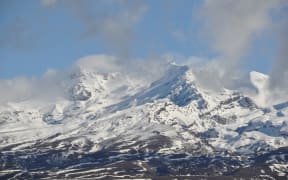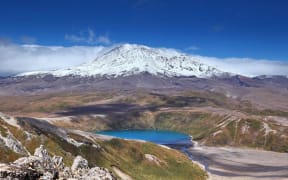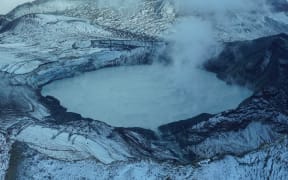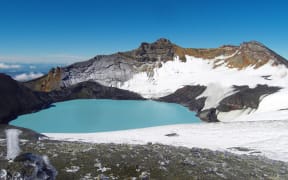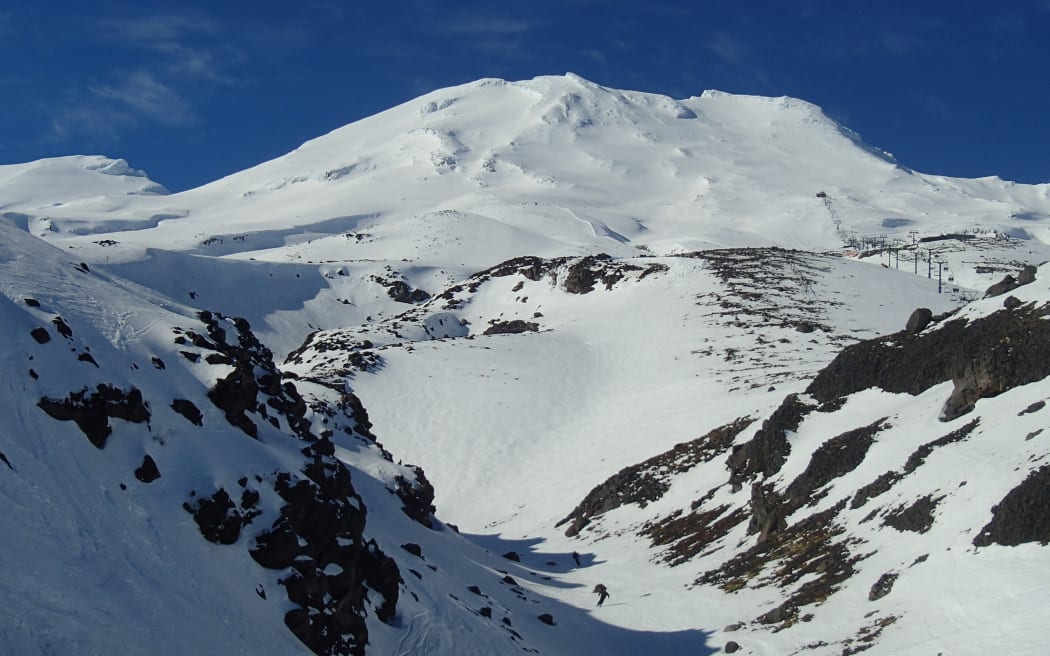
Mt Ruapehu. Photo: RNZ / Alison Ballance
Scientists are investigating what is causing an unusual series of minor earthquakes at Mt Ruapehu.
An uncommon style of small earthquakes have been detected at Mt Ruapehu since mid-February according to a volcanic activity bulletin released by GNS Science on Tuesday.
Duty volcanologist Steven Sherburn said the earthquakes represented something new at Mt Ruapehu, but were not a cause for concern about eruptive activity.
Each earthquake brought less than 10 minutes of ground shaking, and did not visually look like the volcanic tremor traditionally seen at the site, he said.
"We've seen these small, slightly unusual earthquakes, but the rest of the parameters that we monitor are either low or normal. So we're pretty comfortable with what's going on at the moment," he told Checkpoint on Tuesday.
Mt Ruapehu will remain at the lowest volcanic alert level and the aviation colour code remains green - indicating the volcano is in a normal, non-eruptive state.
Sherburn said GNS Science was unable to determine the location and depth of the earthquakes due to their small size and the style of the activity.
The crater lake had shown no signs of warming up, and nor had any sulphur dioxide gas been detected.
"The shakes are really not very intense at all, and we sometimes even struggle to see them with our instruments, so anybody up there is not going to feel them," he told Checkpoint.
"Can I do a sound effect? Because it's really hard to describe. So it's 'brrrrrrrrrr'... that goes on for 10 minutes."
GNS speculated the earthquakes originated near the summit area of the volcano within kilometres' depth beneath the surface as they were only recorded by monitoring stations on the upper part of the volcano.
"It's a low-level, you know, repeating kind of vibration that goes on. Maybe there's a lot of little faults moving repeatedly for five or 10 minutes, but because we haven't seen them before and we've really only just started looking into them, to be honest, we're not quite sure what's causing them…
"Maybe there's a little faults moving repeatedly. The other one is perhaps there's some steam pressure or something surging through a little crack or something like that. They're the kinds of things that we often suggest going on, but of course it's underneath the ground and it's not, you know, it's not really possible to see."
It would take a lot more seismic activity for GNS to get concerned.
"[In] 2022, we had a lot of what we call tremor vibrations that went on for days and days, weeks and weeks, and that was the highest in 20 or 30 years. And to be honest, I thought we were going to get an eruption but nothing happened - it died away and everything went back to normal.
"If the lake got really hot - when I say that, I mean maybe maybe 50C, which it did close to before the 1995 eruptions - those kinds of things, or lots and lots of sulphur dioxide gas coming out, which would be coming from magma. None of those we see at the moment…
"We're keeping an eye on it and we'll let anybody know if it changes."
